Bottle Cap Circularity
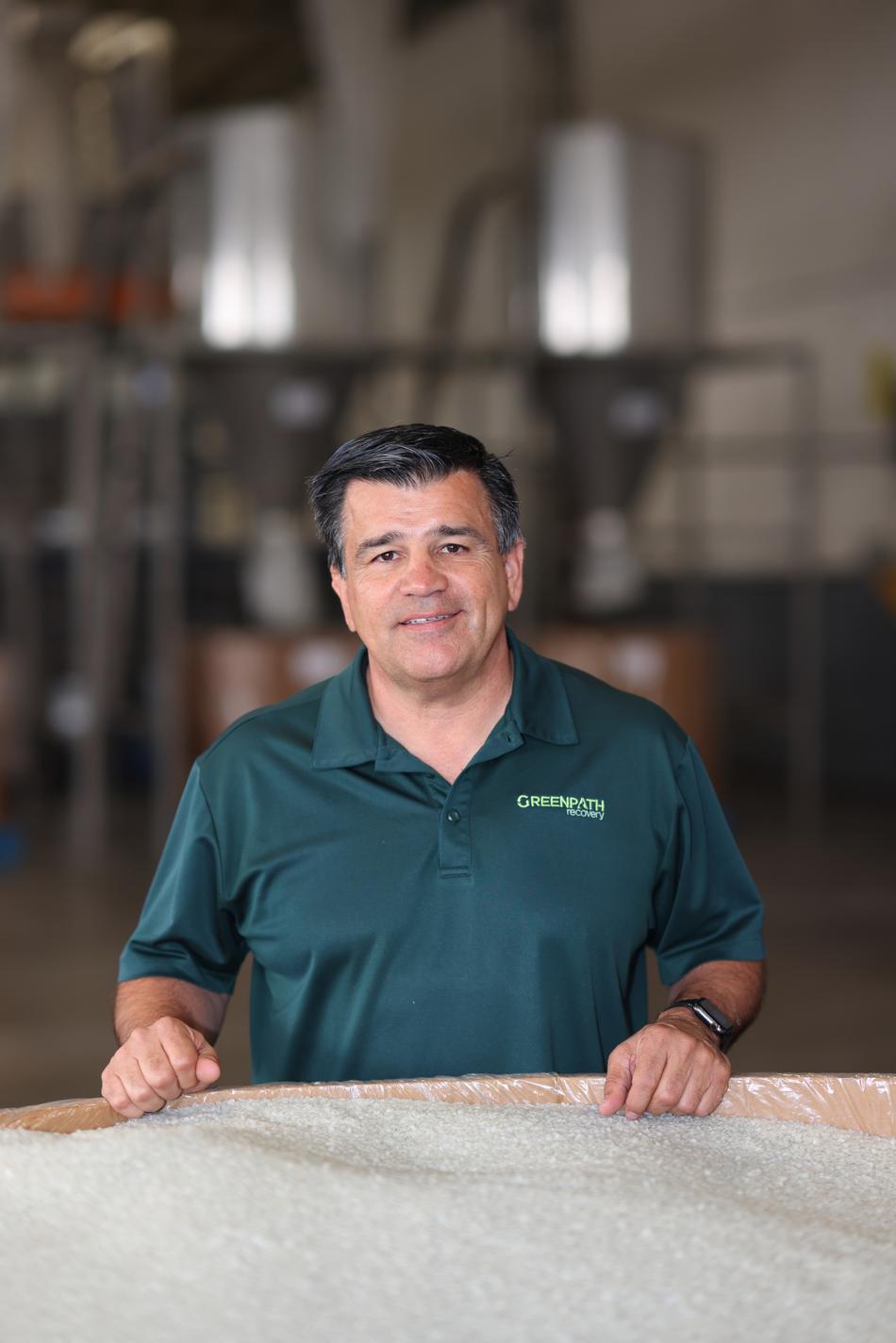
The full-service recycler, processor and manufacturer has partnered with TOMRA Recycling Sorting to install and optimize a plastic flake sorting production line designed specifically to identify and separate polyolefin caps from carbonated and non-carbonated beverage bottles. Greenpath’s vision is to create the same type of effective recycling system for bottle closures that exists for bottle recycling. “We are at the genesis of creating a sorting system for caps similar to what is more common today for the bottle,” adds Eric Olsson, area segment manager, plastics for TOMRA Recycling Sorting.
Operating for more than 25 years with locations in California, Nevada and Texas, the vertically integrated Greenpath accepts a wide range of materials, and the flow of inbound materials can be somewhat inconsistent. However, this is where Castro sees the company’s advantage in offering value-added services. Greenpath creates value being a one-stop solution for suppliers and customers alike by taking mixed trailer loads and variable supply streams and producing consistent, quality products.
Materials received include paper, metals, and plastics. Considering only the polyolefin materials – low-density polyethylene (LDPE), high-density polyethylene (HDPE) and polypropylene (PP) – Greenpath accepts bottles, film, rigid plastics, and, of course, bottle caps. “Polypropylene and polyethylene (PE) are together the most abundant plastic family on earth, but the market is limited for valuable applications for mixed polyolefins,” comments Olsson.
Unfortunately, PE and PP have very close density characteristics and are challenging to separate into their different polymer types. That is why mixed polyolefins are primarily downcycled into more forgiving applications that allow for more contamination or a wider range of material specifications. “Alternatively, other companies use a ‘solution by dilution’ approach to include mixed polyolefins, using primarily virgin material and only a small fraction of recycled plastic,” informs Castro.
The quest for cap to cap
A beverage container commonly consists of four parts: the bottle, cap or closure, ring and label. States with recycled content laws for bottles have seen packaging companies and recyclers take the first step, focusing on the PET bottle, which comprises the bulk of the container’s weight. A more mature PET recycling infrastructure has led to brand owners incorporating up to 100% post-consumer recycled (PCR) material in their bottles.
As regulations stiffen to increase the percentage of recycled content by weight, the next logical container component to address is the cap. “Following Greenpath’s approach, the industry can move toward a 100% PCR by weight package using only mechanical sortation,” says Olsson.
For the cap to get to a recycler like Greenpath, the bottle is the carrier through the MRF. “Otherwise, the cap will get screened out in the front end of the circuit and more likely be landfilled,” mentions Castro.
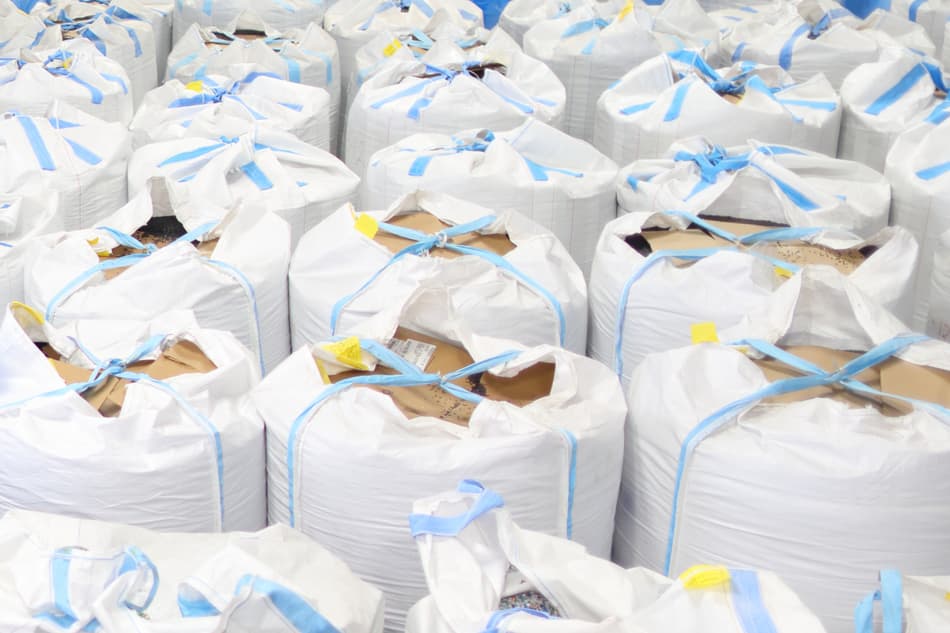
Logic may dictate using PET for both bottle and cap to solve the issue, but Olsson explains it’s not that simple. “Mono-material packaging is a dream that a lot of recyclers, brand owners and chemical companies are striving for, but we are not there yet. Different polymers have different strengths and weaknesses,” he says. “Building in the threading on a cap that’s required to tighten and keep the container sealed is a property that polyolefins, PE and PP, lend themselves especially well too.”
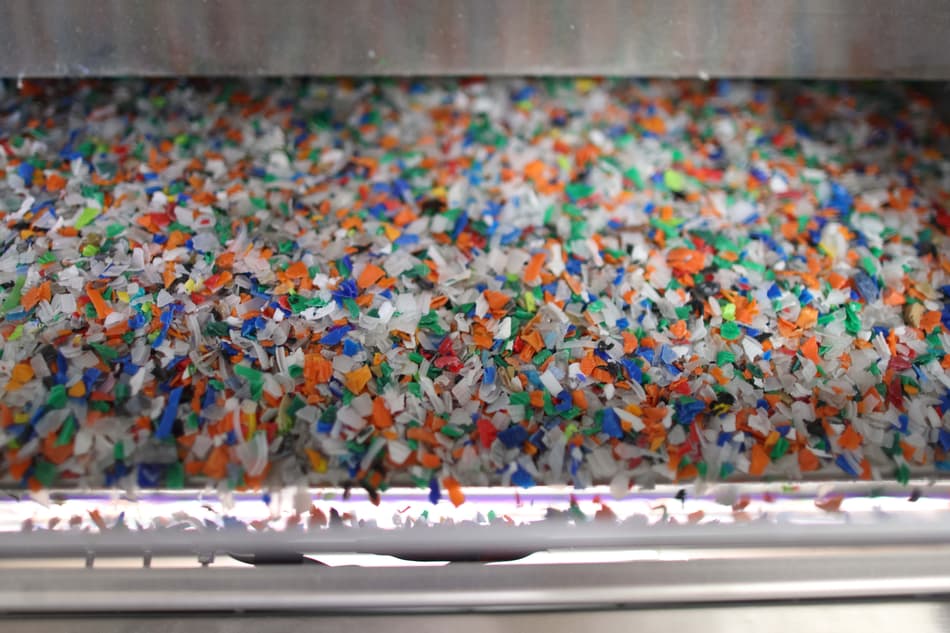
While some bottle recyclers see mixed polyolefins as a waste material, Castro sees opportunity. Because of their experience with a variety of materials and philosophy of one-stop solutions for his suppliers, Greenpath has extensive processing capabilities with different lines to sort diverse feedstock. The company is adept at mechanical, multi-material, and batch recycling processes.
To realize the opportunity to close the loop on caps and offer a more sustainable market for polyolefins, Greenpath investigated various technologies to sort the mixed polyolefins. “PE and PP densities are very close to one another, so using float/sink tanks is not effective,” comments Castro. Alternative recycling technologies were also considered but didn’t offer the yield or recovery for both PE and PP resins that was desired. According to Castro, the cost-benefit analysis just didn’t justify the space and capital required. “The yields are low, and you have to consider the expenditure, space and waste generated from the separation process,” he says.
Olsson mentions that the industry hasn’t begun to reach the ceiling limit for mechanical polyolefin sorting. “It’s best to pursue a path that introduces the least amount of change to the material and sorts in the most efficient way,” he says. “Mechanical and chemical sorting technology OEMs are just getting the first processes off the ground to produce materials resulting from the 2025 and 2030 circularity commitments made in the twenty-teens. Producing 95% or greater purity-by-polymer streams is critical for many types of downstream recycling processes, and flake sorting can get us there.”
Flexibility in mechanical sorting
Discussions related to Greenpath’s goals led down a path to selecting TOMRA’s Discussions related to Greenpath’s goals led down a path to selecting TOMRA’s INNOSORT™ FLAKE sorter. One appealing feature for the company, the sorter does not require a large footprint, allowing for easier integration at the Colton, Calif. facility. After discussing the purity, yield and throughput necessary to meet Greenpath’s objectives, flake sorters were installed.
Designed for flexibility, INNOSORT™ FLAKE incorporates a unique combination of sensor technologies, including color cameras capable of identifying 16.8 million color variations. With two-sided cameras, “one is positioned on each side of the chute where the materials fall through, so it can discern the difference between one side of the flake versus the other,” explains Olsson. It helps to identify in-mold labeling that can be a contaminant. “Features like this cater the machine especially well to the polyolefin recycling supply chain, which is in dire need of quality gap closure,” he adds.
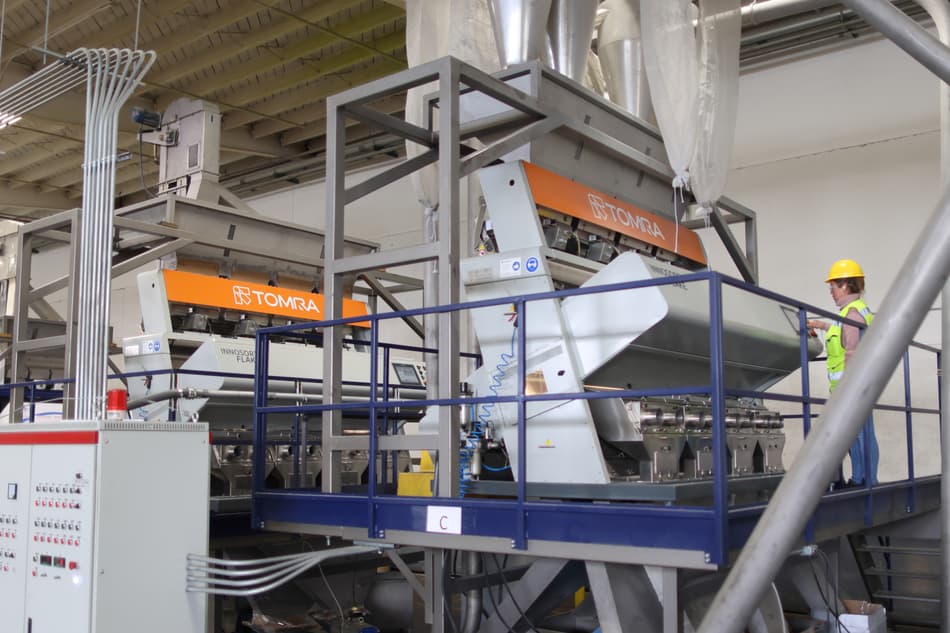
Configuration flexibility allows for single or multiple step sorting with the same unit. “We can split the machine into multiple sorting tasks by chute and even split a chute into two different process streams or more,” explains Olsson. “We can do multiple passes through a machine or link many machines in series to achieve the results we need.”
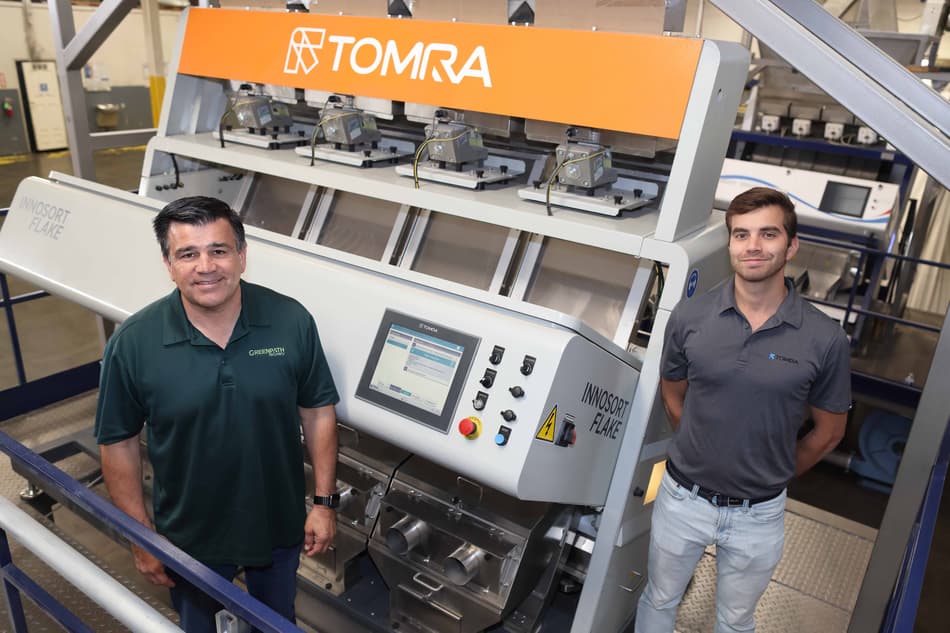
Castro admits the inconsistent feedstock Greenpath receives does present sorting challenges, but the company has been able to overcome these variations through years of experience to provide a good high-end recycled product. Still, the company ended up with a mixed polyolefin material. “TOMRA’s technology is allowing us to take the material to another level, to purify at a higher level that opens up the whole circular opportunity with going cap to cap,” he says.
Optimizing for consistency
What makes Greenpath an asset for its suppliers also makes it a hindrance to polyolefin flake sorting. The inconsistent feed – plus the fact that this is the first operation in North America to attempt this type of mixed polyolefin sorting – has demanded special attention to detail with sorting optimization. “These machines are themselves optimal in a steady state stream,” says Olsson, “and, thus, have to work together as a holistic process system, along with other types of processing equipment.”
Getting it right to meet Greenpath’s high purity goals of mono-polymer PE and PP from inconsistent mixed polyolefin feedstock has both parties analyzing the entire sorting process. While there is still some work to be done at the Colton facility, “mechanical viability is there,” confirms Olsson.
The system is now to the point where the circuit can first sort by polymer with the INNOSORT™ FLAKE units and then by color. “If a customer wants a natural or specific sorted color such as red, white, blue orange, or green PE or PP product, we can purify and provide them a sorted color that meets their specific application using PCR,” says Castro.
TOMRA’s Olsson shows optimism for what has been accomplished with Greenpath, its impact on the mixed polyolefin market and what it means for packaging companies trying to meet recycled content targets. “We are just now starting to act on this opportunity,” he offers. “We’re at the beginning for mixed waste streams of polyolefins going closed loop. It won’t just be a pipe dream for polyolefins anymore.”
In addition to bottle cap circularity, Greenpath can help companies close the loop on other recycling grades. More info can be found at https://greenpathrecovery.com/commercial-recycling-services/closed-loop-recycling/
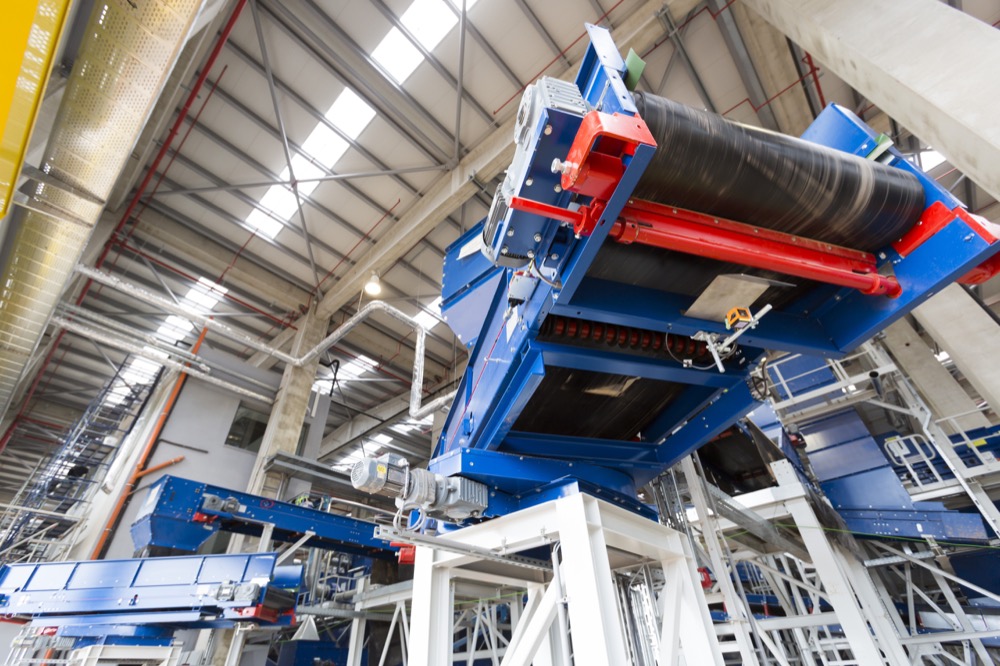
Density Matters
When our consultants review existing commercial recycling programs, they often come across light and loosely baled material. Increasing the weight and uniformity of bales can often be the low hanging fruit towards a successful commercial recycling program. Bale density can play a major factor in the overall profitability with business recycling. Sometimes this can be due to equipment issues, but more often it can be largely improved with a few helpful tricks of the trade.
Here are some quick tips for making heavy bales;
– If baling cardboard, flatten boxes prior to loading in baler and spread boxes out evenly inside bale chamber.
– When loading initial material for a new bale, do not load to the top. Partially fill chamber to about only 1/3 of its capacity. This will produce a good base and tight compaction for the bottom of bale to build on. Repeat for first 2-3 cycles.
– When not loading material, manually stop the platten at its lowest position so it is constantly pressing down the material in chamber and keeping the base of the bale tightly compacted. Many grades of recyclables will expand, so keeping the baler ram in the down position will keep material compressed.
– When bale is full, make sure platten is depressed all the way down prior to opening door and using wire ties.
– Use baling wire in all available wire slots. Usually at least 5-6 wires per bale. Not using a sufficient amount of baling wire will allow the bale to expand and/or prevent from being a tight rectangular shape.
These are just a few tips assuming your baler is in good condition and does not need service. If these tips do not work, we suggest scheduling a maintenance call to further diagnose.
Logistics has a huge impact on recycling so the heavier the bale, the less impact that freight costs will impact your overall recovered value. Additionally, heavy bales take up less space in a warehouse to store and reduce associated labor costs with handling material. Heavy bales are very important for an effective recycling program. This will lower your costs and increase the value of your material.
Greenpath offers free waste audits and will provide an analysis of your existing business recycling program.
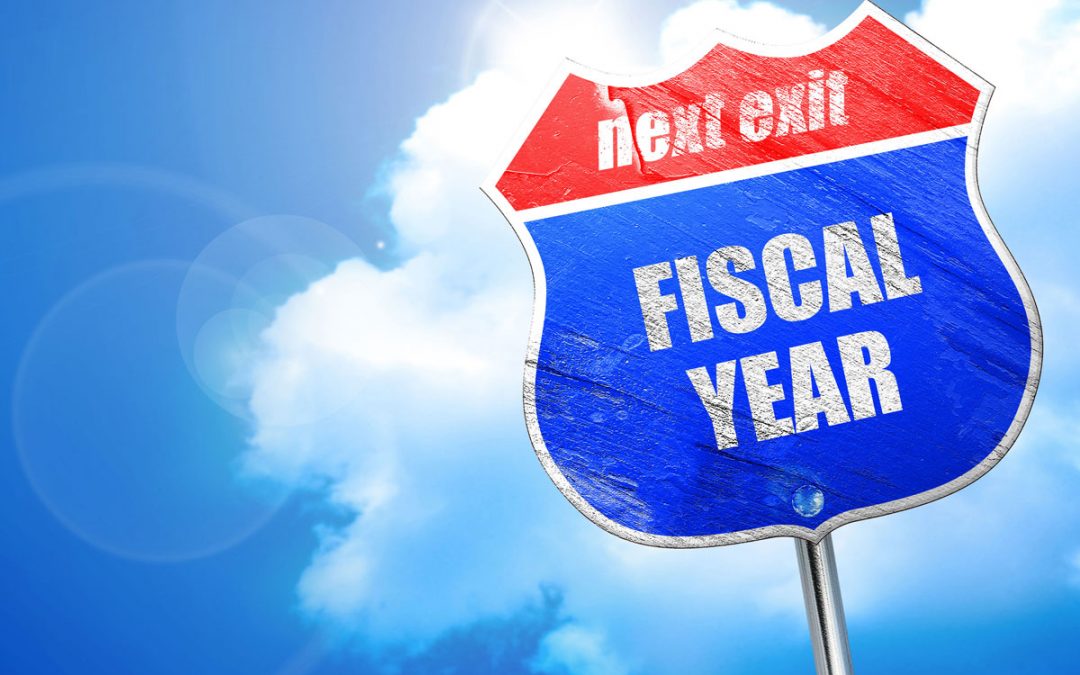
Fiscal Year End Recycling
With many businesses wrapping up their fiscal year end in December, income, profits, and costs associated with excess inventory is a hot topic. The choice to recycle slow moving inventory or excess packaging like cardboard, film, totes, expired products, etc… can create an income source for some companies rather than carrying the costs into the new year.
Greenpath offers commercial recycling, corporate sustainability, and zero waste management solutions to help businesses reduce their waste sent to landfills, increase revenue with recycling, and explore re-use opportunities with boxes, packaging, and other material handling products.

“People, Planet, Profit” – It’s not a triple bottom line.
Sustainability is a driving factor for many companies, however understanding how to measure and achieve sustainability has proven to be extremely complex. In 1994 John Elkington coined the phrase “people, planet, profit” at SustainAbility. This concept of the triple bottom line is now found in nearly all discussions of corporate sustainability. And while the newly commissioned sustainability executive will proudly tout their implementation of “people, planet, profit; I can’t help but feel they are missing the real solution.
The triple bottom line follows the belief that a business should account for and take inventory of environmental impacts and social impacts while maximizing financial gains. Inherently there is a constant struggle to justify the financial costs of environmentally sustainable solutions, and improving the community comes at a price as well. Inevitably all sustainability managers find themselves with ideas and solutions to improve people and planet, but without justification to implement these solutions because of the impact on profit.
The problem is that we need a fundamental shift in the understanding of the purpose of business and what “people, planet, profit” really means. Only then can these three aspects work together seamlessly.
Some believe the purpose of business is to make money – profit. The butcher makes money selling meat, the chef makes money cooking meals and the builder makes money buying houses. While each of these businesses could make a profit, this is not the purpose of business. If consumers don’t want meat, cooked meals or new homes, those businesses will never survive. The only way a business remains is if it provides a value to the community.
Obviously these are simplistic examples, but the overall perspective is the same. The purpose of business is to provide value. Value to the people, value to the planet.
Profit on the other hand is not a value provided. Profit is what you get in exchange.
In a truly sustainable business, “people, planet, profit” is not a triple bottom line – it is a math equation and it looks like this:
People + Planet = Profit
The profit is an inherent result of providing value to the people, value to the planet. In a sustainable business, profit should never exceed value, nor should it be less.
Perhaps the solution to the bottom line is simply creating a balance between the value you provide to people and planet, and the value you receive in return as profit?
Written by Teresa Clark. Teresa Clark is the VP of Product Development at ENSO Plastics, you can find contact information for ENSO Plastics by visiting our Contact page here on this site or by visiting www.ensoplastics.com

US recycling saving the rainforest
Greenpath Enterprises has partnered with Cuipo.org, an environmental conservation and lifestyle brand, to leverage our US recycling efforts to directly help preserve prime rainforest around the globe. We will be donating recovered recycling revenue to support this cause and prevent further deforestation. Greenpath helps businesses reduce and divert waste created from their operations from being sent to the landfill. As a direct business recycler, processor and manufacturer, Greenpath converts recyclable resources into new finished products. In addition to recycling, we help companies explore alternative reuse opportunities for their packaging and can implement closed loop and zero waste programs.

Safe Travels
One of the most frustrating things our receiving personnel experiences is when they open a recycling trailer and the material is scattered across the floor. Not only does this require a substantial amount of extra labor but often the recyclables are contaminated and their typical value and the ability to reprocess has been compromised. The initial reaction could be blame the driver for taking a sharp turn or driving too fast but often this can be avoided with a few extra steps when loading recycled materials.
1. Baled Recyclables – Make sure bales are tightly compacted with at least 5 baling wires.
2. Gaylords – Strap down boxes to pallet to secure.
3. Liners – Use gaylord liners that are long enough to cover material to avoid cross contamination during transport and handling.
4. Pallets – Avoid broken pallets as material will fall off and spill during transit.
5. Double Stacking – When stacking recyclables, put heavier materials on the bottom row and the top rows of similar or smaller shape. i.e., do not load bales on top of gaylords or gaylords on top of bales.
6. Used Boxes – Stretch wrap used packaging or other loosely stacked materials.
7. Secure the load – Ask driver to use load locks to avoid pallets and material shifting in transit.
These are just a few common tips. Our recycling consultants or logistics personnel can assist with specific recycling guidelines to help secure material and ensure the best value is maintained for your business.
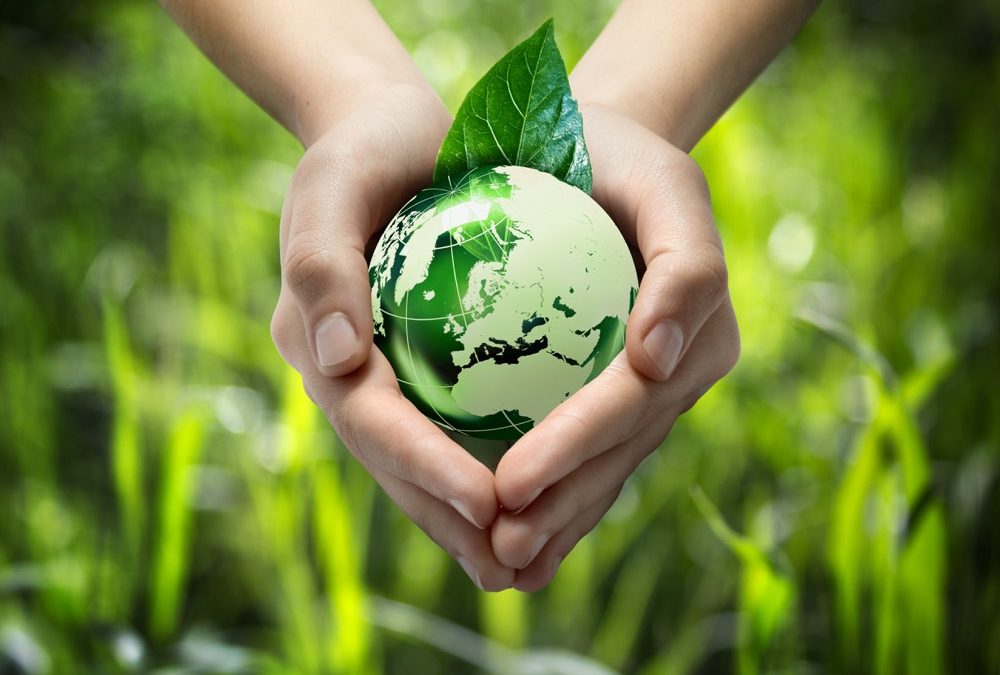
Welcome to our updated site!
Welcome to our updated site! We’ve added a ton of content, made the code mobile friendly, and added new sections and new images.
It still may have some bugs for a few days, so please excuse our dust. If you see anything wrong, please let us know and we’ll fix it as soon as we can.
Thank you, and let us know what you think!
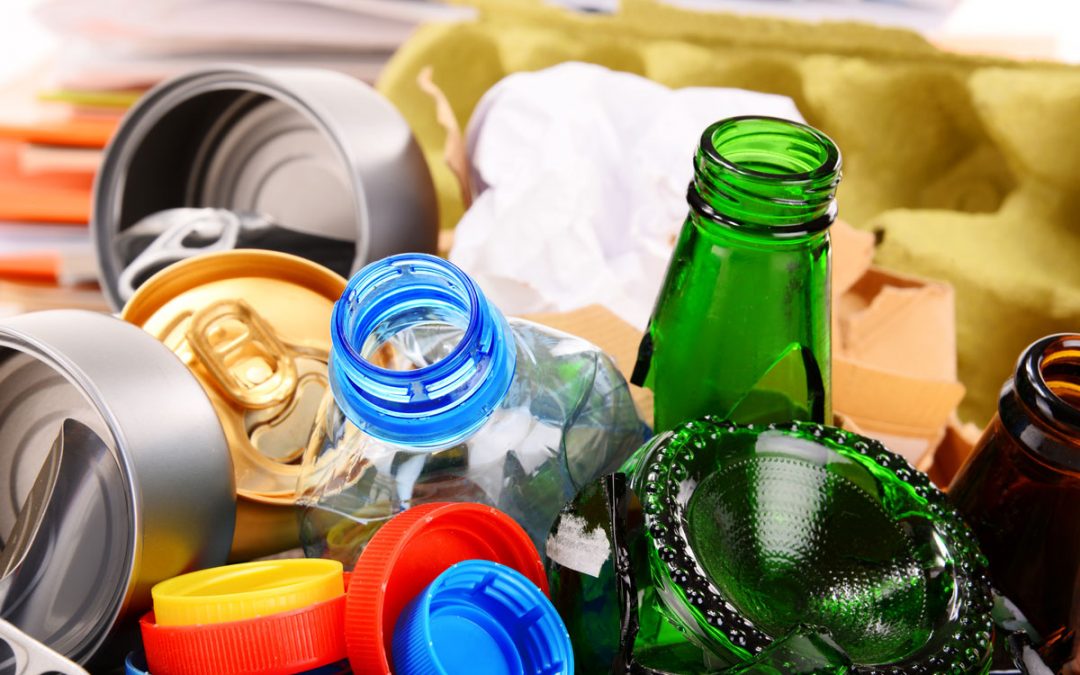
Transform Trash to Treasure
Increase profits in five simple ways with better waste management
Americans alone are accountable for producing 220 million tons of waste, a year. This number exceeds that of any other country. Waste management is the only solution to this pressing issue. Today, more than 20 different types of industry are involved in waste management. The various phases of waste management comprise collecting, transporting, disposing, recycling and regulating waste.
Business owners and managers continuously seek to make the workplace more profitable. Waste management can provide them with a booming business opportunity. It also plays a pivotal role in the economy, since it prevents more waste generation, aids reuse, recycle and energy restoration. The way we collect and handle waste can lead to either increased recycling or an inefficient system where recyclable waste ends up in landfills or is incinerated. In the latter case, it will eventually result in harmful environmental impacts and notable economic losses.
Mentioned below are five ways to increase profits with better waste management:
- From waste to resources: The market needs to be encouraged to reuse. In a circular economy, materials that can be recycled are infused back into the market as new raw materials. These reused products are termed as ’secondary raw materials’, and they can be traded just like primary raw materials sourced from traditional extractive resources. The increase of non-toxic material cycles and enhanced tracking of chemicals of concern, will aid recycling and improve the uptake of secondary raw materials.
- Coherent strategy and policies: These are needed to allow for the recycling, re-use and repair of primary materials. Governments, through national waste management programs, should promote waste prevention and minimization. They should also work towards development and execution of national strategies for waste management, which promote and prioritize reuse and recycling of waste. Thus, a well-established and well-financed waste management policy is crucial for dealing with waste in an efficient way.
- Economics of recycling: Nationwide, recycling has boosted the growth of an entire industry and produced jobs. The realization of increased monetary savings through recycling has drawn more people to it. Considerable profits can be achieved through avoiding disposal costs, reduced solid waste services and trading recyclable materials.
- Extracting energy from waste: Accurately dried and sorted waste can be turned into a potent and clean source of fuel for industrial processes. It can be used in power generation and cement kilns, thus enabling their parent companies to reduce their carbon footprint.
- Organic waste processing (Composting): Composting is the process of transforming organic waste into a stable product (compost) under controlled conditions. The demand for compost is huge, as it is a cheaper alternative to expensive inorganic fertilizers and is rich in essential minerals.
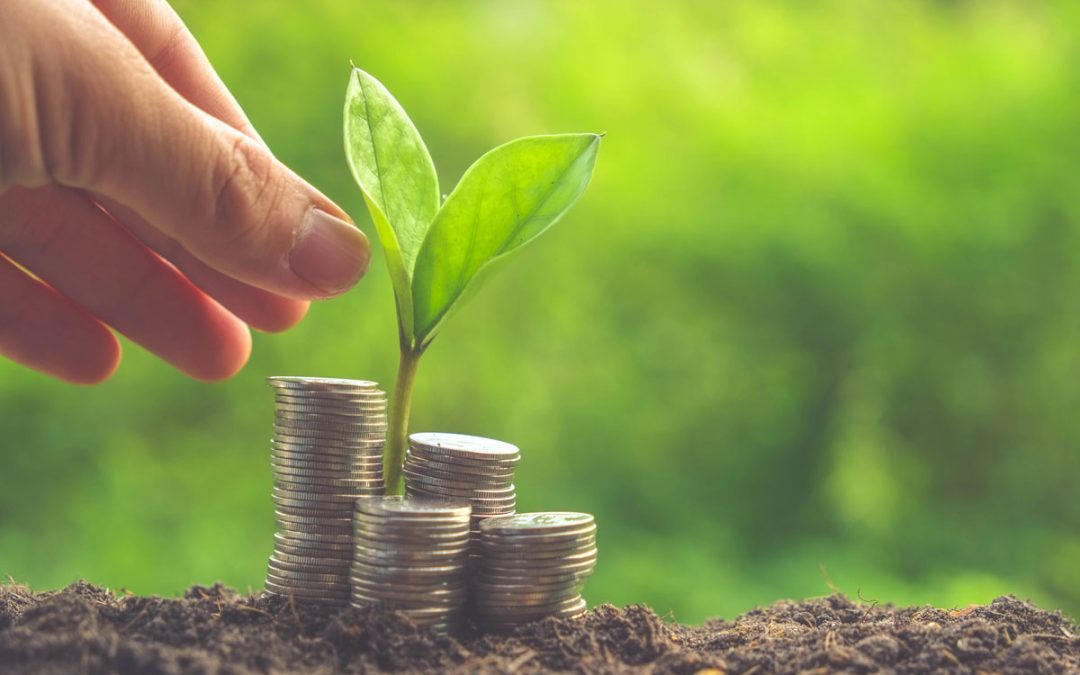
Business Recycling is Not Free
Some recycling or waste management companies promote free pickups for qualified businesses as a method to increase the perceived value of their services. As your parents or grandparents likley said at some point “Nothing is free”. This applies to the transportation of recyclables.
Business recycling and corporate sustainability programs can be profitable as well as good for the environment. It is important however to distinguish the value of the commodities from their associated costs in order to effectively manage. Commercial transportation can be very expensive with todays high fuel costs, labor, and maintenance. If a supplier is offered a “free pickup” it is typically because the value of the material exceeds the costs of transportation and handling. It is typically best to isolate the transportation to best understand all costs, revenue, and opportunities for improvement. The transportation costs can still be rolled into the recycling services offered, if preferred, but in order to understand the actual rabate value, it is best to isolate.
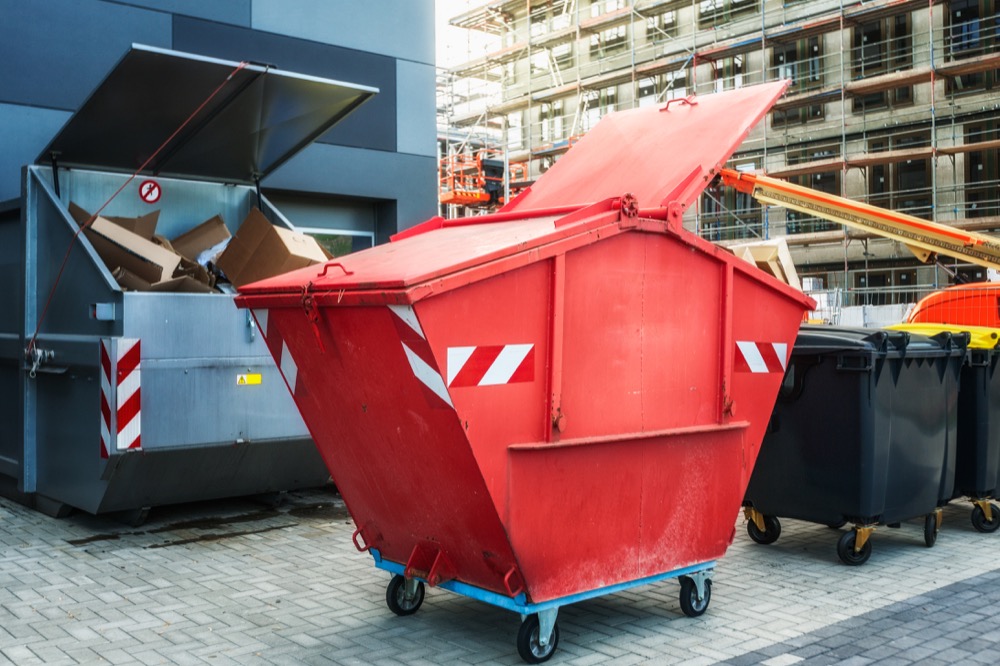
Location, Location, Location….freight matters with recycling!
The value of commercial recyclables is heavily dependant on the location of the material. What may be a highly valuable recycling commodity, if delivered, might incur an expense if pickup service is needed. Freight can be costly and is an important consideration when designing a business recycling and sustainability program.
The value of commercial recycling rebates as it relates to location can further be impacted by the bulk density and volume. The heavier the payload, the less impact that transportation costs will impact the overall net recovered value. The heavier the recycled material, the less costly the freight. Proper recycling equipment and loading pattern are critical to success.
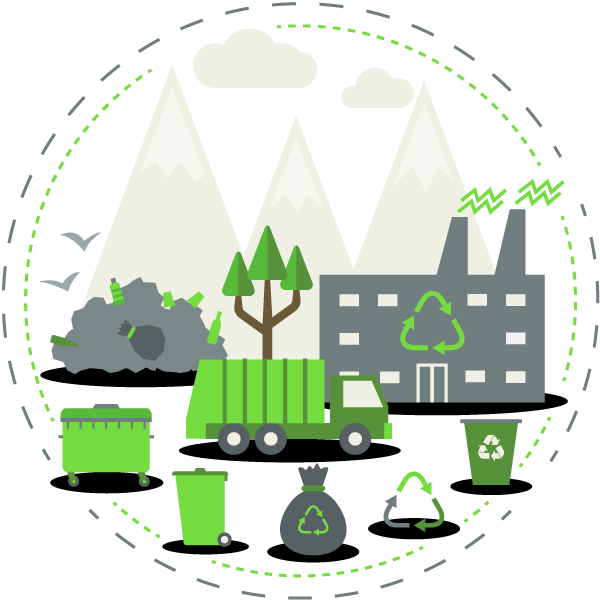
Contact us today for your commercial recycling needs.
or call us at (909) 954 0686
